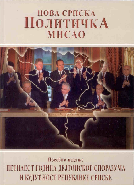| NSPM in English | |||
Saudi Arabia witnesses first signs of unrest as 'day of rage' planned for March 11th |
 |
 |
 |
| недеља, 27. фебруар 2011. | |
|
(The Irish Times, 26.2.2011)
The popular uprisings across the Middle East are sparking similar unrest in the Kingdom of Saudi Arabia, with youth groups and workers in that country now calling for a “Day of Rage” demonstration in the capital, Riyadh, on March 11. Already there have been protests last week in the city of Qatif and other towns in the country’s oil-rich Eastern Province demanding, among things, the release of political prisoners and a raft of social reforms. There are also reports of prominent Shia clerics being detained by the Saudi Sunni authorities, and security forces mobilizing in anticipation of further protests.
Sadek al-Ramadan, a human rights activist in Al Asha, Eastern Province, said: “People here are watching closely the protest movements across the region, which are tapping into long-held demands for reforms in Saudi Arabia.” Al-Ramadan said that there are “deep frustrations” in Saudi society over high levels of poverty, unemployment, poor housing and perceived widespread corruption among the rulers of the world’s top oil exporter whose Gross Domestic Product last year is estimated at $622 billion. An indication of the concern among the Saudi monarchy about growing unrest in the country was a closed meeting this week between King Abdullah and King Hamad al-Khalifa of Bahrain. The latter travelled to Riyadh to greet his 87-year-old Saudi counterpart on his return from the US and Morocco, where the ailing ruler had been receiving medical treatment. On the same day, Wednesday, the Saudi government unveiled a $37 billion social fund aimed at tackling youth unemployment and chronic shortages in affordable housing. A 15 per cent hike in salaries for government employees was also announced. Al-Ramadan said that while the country’s minority Shia communities have “felt discrimination and repression most keenly over many decades, their grievances are also being shared increasingly by the majority of Sunni people”. Saudi Arabia’s population is estimated at around 19 million, with an expatriate workforce of some eight million. “Unemployment is as high as 50 per cent among Saudi youth, whether Shia or Sunni, and there is a serious shortfall in housing and education facilities,” said Al-Ramadan. “People want more transparent governance, an end to corruption, and better distribution of wealth and welfare.” He said that there was widespread recognition that reform in Saudi Arabia is badly needed. “The question is: how far will the call for reforms go?”
Before the recent rallies began in Bahrain on February 14, small groups of Bahraini protesters were calling for relatively mild constitutional reforms. But after a week of heavy-handed repression resulting in seven civilian deaths and hundreds of injured, the protest movement in Bahrain is now bringing up to 200,000 people on to the streets every night demanding the overthrow of the al-Khalifa monarchy. In the coming weeks, the Saudi rulers face a difficult balancing act. Too little reform or too much repression by the authorities could set off the kind of full-blown uprisings sweeping the Middle East. And there is a lot at stake for the kingdom’s rulers. Up to 90 of the country’s oil production and processing is located in its restive Eastern Province, where the state-owned oil company Saudi Aramco has its headquarters in Dhahran. Some 80 per cent of Saudi Arabia’s national income is due to its oil and gas sectors. Middle East analyst Ralph Schoenman said: The oil wealth of Saudi Arabia is concentrated almost entirely in the Shia-dominated Eastern Province - that sector of Arabia where popular disaffection is as profound and political alienation as explosive as it is in Bahrain.” Schoenman added: “Beneath the appearance of calm, the Saudi royal family and King Abdullah have been consulting frantically with the other Gulf Sunni feudal sheikhdoms - from Bahrain, the United Arab Emirates to Qatar and Oman.” http://www.irishtimes.com/newspaper/world/2011/0226/1224290928849.html |
Од истог аутора
Остали чланци у рубрици
- Playing With Fire in Ukraine
- Kosovo as a res extra commercium and the alchemy of colonization
- The Balkans XX years after NATO aggression: the case of the Republic of Srpska – past, present and future
- Из архиве - Remarks Before the Foreign Affairs Committee of the European Parliament
- Dysfunction in the Balkans - Can the Post-Yugoslav Settlement Survive?
- Serbia’s latest would-be savior is a modernizer, a strongman - or both
- Why the Ukraine Crisis Is the West’s Fault
- The Ghosts of World War I Circle over Ukraine
- Nato's action plan in Ukraine is right out of Dr Strangelove
- Why Yanukovych Said No to Europe

.jpg)
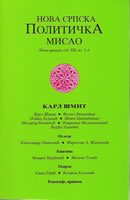

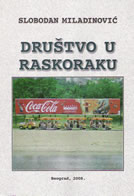

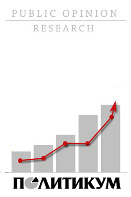



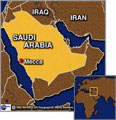 Poverty and joblessness are prompting protest in the kingdom, writes Finian Cunningham in Manama
Poverty and joblessness are prompting protest in the kingdom, writes Finian Cunningham in Manama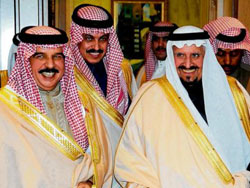
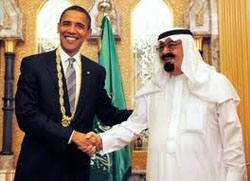 The Saudi authorities are undoubtedly mindful of the rapid escalation of anti-government protests in the neighbouring Persian Gulf island state of Bahrain, which is only an hour’s drive away from the Eastern Province across a 25-kilometre causeway. Noticeably, the last two weeks have seen a big fall in the numbers of Saudis who usually come to Bahrain for a weekend getaway, with reports that Saudi officials have been turning away would-be visitors trying to cross the causeway.
The Saudi authorities are undoubtedly mindful of the rapid escalation of anti-government protests in the neighbouring Persian Gulf island state of Bahrain, which is only an hour’s drive away from the Eastern Province across a 25-kilometre causeway. Noticeably, the last two weeks have seen a big fall in the numbers of Saudis who usually come to Bahrain for a weekend getaway, with reports that Saudi officials have been turning away would-be visitors trying to cross the causeway.